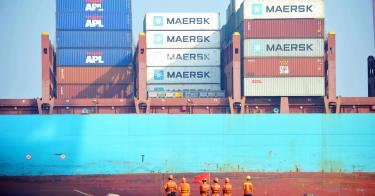We’re in the middle of what could be the worst pandemic of our lifetimes. An event of this magnitude is hard to prepare for—even if you see it coming. And it will be just as hard to prepare for the next disruption to our economy.
The current crisis has, however, gotten many to think about preparing for the next crisis, and this has led to a new debate over the value of global supply chains.
Now there’s an almost daily back-and-forth between those advocating for economic self-reliance and those trying to protect free trade. Sometimes, these debates focus on a specific sector, like manufacturing, or on a particular line of business, like pharmaceuticals.
Many of those critical of global supply chains appear to be long on hindsight—if only we had done something months or years ago, things could be different—and low on proposing meaningful action to be taken now.
They do, however, suggest that global supply chains will drastically change during and after this pandemic. But there are good reasons to be skeptical of predictions that the days of global supply chains are drawing to a close.
One reason for skepticism is that those making this prediction almost never address why supply chains nodes moved out of the U.S. to begin with.
The same goes for those who have long-argued government should take action to coerce manufacturing back to the U.S. or expand protectionist laws that suppress foreign competition.
Supply chains, like all economic activity, depend on costs. And all sorts of costs go into deciding whether to diversify a supply chain or localize: capital and labor costs, cost of resources, cost of production, transportation costs, regulatory costs (including tariffs and taxes), and so on. Additionally, there are less tangible costs to consider, such as those imposed by weather, political uncertainty, or war (or a pandemic).
Historically speaking U.S. regulations, layered on top of high capital and labor costs, have often increased the domestic production costs so much that moving production to another country makes sense—even at the risk of having to surrender your intellectual property or having it stolen.
Ironically, over the last few years we’ve seen companies considering moving out of China as regulatory and political uncertainty, as well as rising capital and labor costs, have increased the cost of doing business there.
But don’t take this to mean those companies are coming to the U.S. While the U.S. remains a much more popular destination for foreign direct investment than China, it’s still too costly for many. Most of the foreign-owned businesses in China that were pondering a move before the coronavirus outbreak were eying South/Southeast Asia or Mexico as their next destination.
To its credit, the Trump administration has worked to reduce costs for companies by cutting regulations, negotiating away tariff and non-tariff barriers through new trade deals (though there have been new tariffs added as well), and lowering corporate taxes. These reforms have helped make the U.S. a more attractive destination for business.
So to say no companies could come back to the U.S. or North America would be incorrect. But to suggest that global supply chains are going to completely fall apart, or that they should, seems rather farfetched.
For starters, U.S. companies have tremendous sunk costs abroad—more than $6 trillion in direct investments. That money was not invested overnight, nor can it be easily withdrawn like money from an ATM.
Relocations can’t happen overnight, either. Many of the greenfield/brownfield investments people would like to see return to the U.S. (e.g., manufacturing) take months, if not years, to set up and get going. And today’s disruptions and price differentials do not necessarily mean that these relocations—which can cost millions or even billions of dollars—will be good investments years from now.
At the end of the day, businesses will make the best decisions for their shareholders and employees—whether it’s a need for more diversity in their supply chains, or less. But without talking more about the costs that incentivize businesses to move abroad, and how to reduce them, the economic nationalists and free trade-advocates are unlikely to reconcile anytime soon.
This piece originally appeared in RealClear Markets



